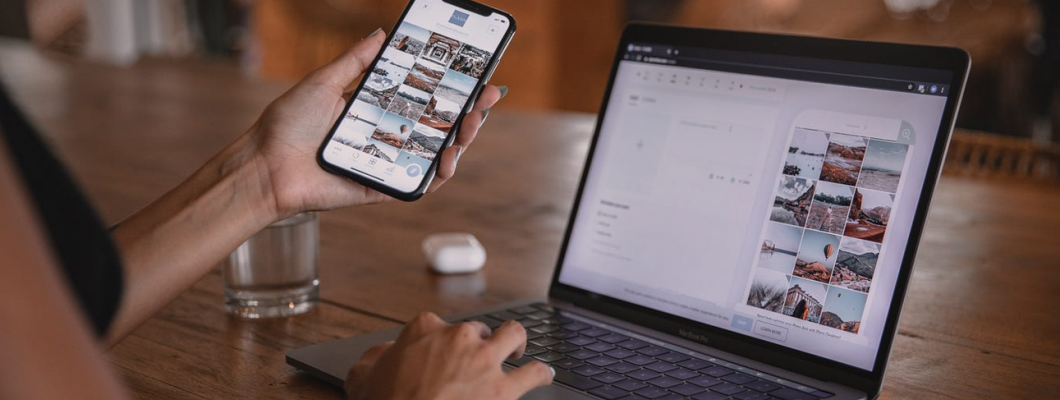
In an era where smartphones dominate digital access, traditional design rules no longer suffice. Mobile-first design has evolved from a buzzword into a fundamental approach, especially in a world where users are constantly scrolling on the move. This shift means designers must go beyond simply scaling down desktop visuals—they must rethink how content, especially graphics, is structured and delivered on smaller screens.
Today’s audiences consume information rapidly and often with limited attention spans. This makes graphic design a key tool in quickly capturing user interest. Visuals must load fast, convey meaning instantly, and guide users through mobile experiences smoothly. It’s not just about aesthetics; it’s about performance, function, and user engagement. Whether you're a UX designer, developer, or brand strategist, adapting to a mobile-first, scroll-driven environment is essential. From optimizing images for speed and clarity to designing vertically friendly layouts and touch-responsive elements, mastering mobile-first graphics requires both strategy and creativity. This blog will explore the growing importance of mobile-first design, the unique challenges it presents, and actionable tips for creating graphics that not only look great on smartphones but also enhance usability and drive conversions in a scroll-first world.
Why Mobile-First Design Matters
With over 60% of global web traffic coming from mobile devices, designing for desktops first is no longer practical. Users access websites, apps, and platforms while commuting, waiting in line, or multitasking. This means:
Attention spans are shorter.
Screen sizes are smaller.
Touch is the primary interaction method.
To succeed in this environment, designers must prioritize mobile usability, and that includes rethinking how graphics behave, appear, and load.
What is a Scroll-First World?
The average smartphone user scrolls over 100 meters per day. This rapid, vertical behavior has changed the way content is consumed. In a scroll-first world:
Graphics must capture attention instantly.
Visual hierarchy is crucial—users scan, not read.
Speed matters—heavy visuals slow down engagement.
Content must be digestible in vertical, linear formats.
Designers must now create snackable, scannable, and visually striking graphics optimized for constant motion.
Challenges in Designing Graphics for Mobile
Designing for mobile-first doesn't mean shrinking desktop visuals—it’s about rethinking content for mobile constraints. Key challenges include:
Limited screen space – Every pixel counts. Oversized graphics or detailed infographics may not render well.
Touch interaction – Buttons, icons, and tap targets must be large enough and responsive.
Performance optimization – Large image files lead to slower load times, frustrating users.
Responsiveness – Your design must adapt seamlessly across hundreds of device sizes and resolutions.
Best Practices for Mobile-First Graphic Design
1. Design with a Vertical Flow in Mind
Most mobile interaction is vertical, so graphics should support a vertical narrative. Use stacked layouts, vertical illustrations, and modular sections that break up complex visuals into scroll-friendly chunks.
2. Prioritize Visual Hierarchy
Use contrast, color, size, and whitespace to direct attention. Important elements—like CTAs or key visuals—should appear above the fold or early in the scroll to engage users quickly.
3. Compress & Optimize Image Assets
Performance is key. Use tools like:
WebP format for lighter file sizes
Lazy loading to delay off-screen images
SVGs for icons and illustrations
This ensures fast load times without sacrificing quality.
4. Use Scalable, Vector-Based Graphics
Scalable Vector Graphics (SVGs) maintain crisp quality on any screen size and resolution. They’re lightweight, SEO-friendly, and easily animated.
5. Responsive Typography & Icons
Your fonts and iconography should scale well on smaller screens. Stick to legible fonts, avoid thin weights, and ensure tap targets are at least 48x48 pixels for ease of touch.
6. Microinteractions & Motion Graphics
Subtle animations and motion graphics can guide user attention, indicate loading states, or reinforce brand personality, without overwhelming or distracting users. Example: A bouncing arrow can signal users to keep scrolling. A glowing CTA button can increase conversions.
Tools & Frameworks for Mobile Graphic Design
Figma & Adobe XD – Responsive design prototyping and UI kits for mobile.
Canva for Teams – Great for quick mobile-first social visuals.
Lottie by Airbnb – Lightweight animations optimized for mobile.
TinyPNG / ImageOptim – Compress graphics for faster mobile loading.
Case Study: Mobile-First Design in Action
Spotify’s Mobile Interface
Spotify has mastered mobile-first graphic design by:
Using bold album art as a focal point.
Creating interactive cards that are thumb-friendly.
Employing subtle motion graphics to enhance UI feedback.
Ensuring fast load times through optimized images.
This results in a visually immersive yet highly functional experience.
Don’t Forget Accessibility
Colorblind users, those with low vision, or motor impairments should still enjoy a seamless experience. When designing mobile-first graphics:
Use high contrast and accessible color combinations.
Avoid relying solely on color to convey meaning.
Provide alt text for images and icons.
Ensure buttons and elements are not too small or close together.
The Future of Mobile Graphics: AI and Personalization
As personalization and generative AI evolve, expect mobile-first graphics to become more context-aware:
Graphics that adapt in real-time to user behavior.
AI-generated visuals based on user location, preferences, or past behavior.
Smart layouts that change based on scrolling speed or device orientation.
Designers who embrace this shift will stay ahead of the curve.
Conclusion:
Mobile-first design has become the standard in today’s scroll-driven world. It’s not about simply resizing graphics for smaller screens but rethinking how visuals function on mobile fast, intuitive, and engaging. In a landscape where attention spans are short and users interact on the go, visuals must load quickly, tell a clear story, and enhance usability. By understanding mobile user behavior, using modern tools, and applying smart design principles, you can craft mobile-first graphics that elevate brand storytelling, improve user experience, and drive results. The focus is on designing visuals that perform with purpose optimized for impact, speed, and seamless interaction.

Leave a Comment